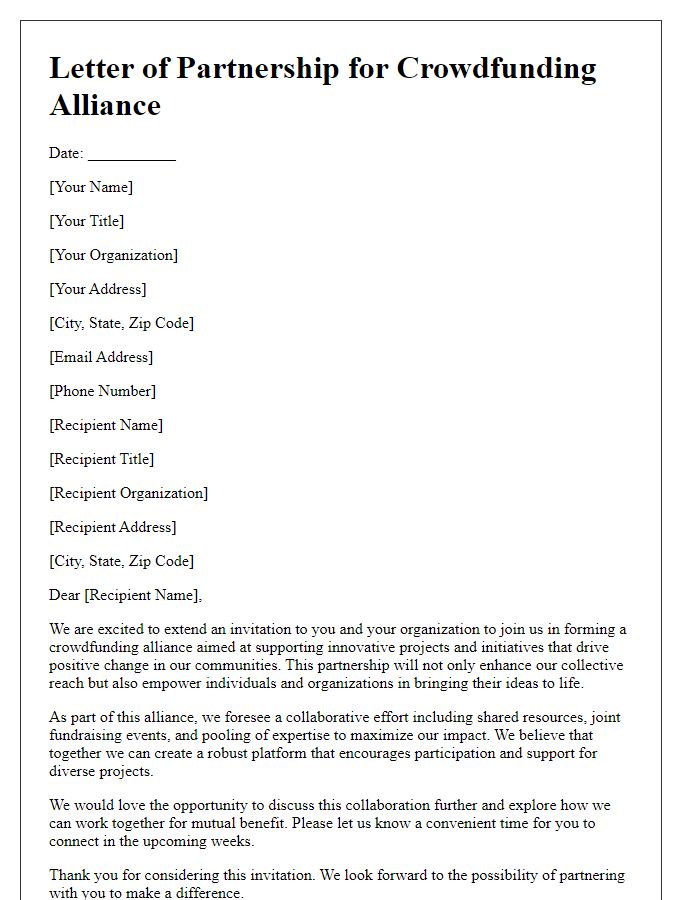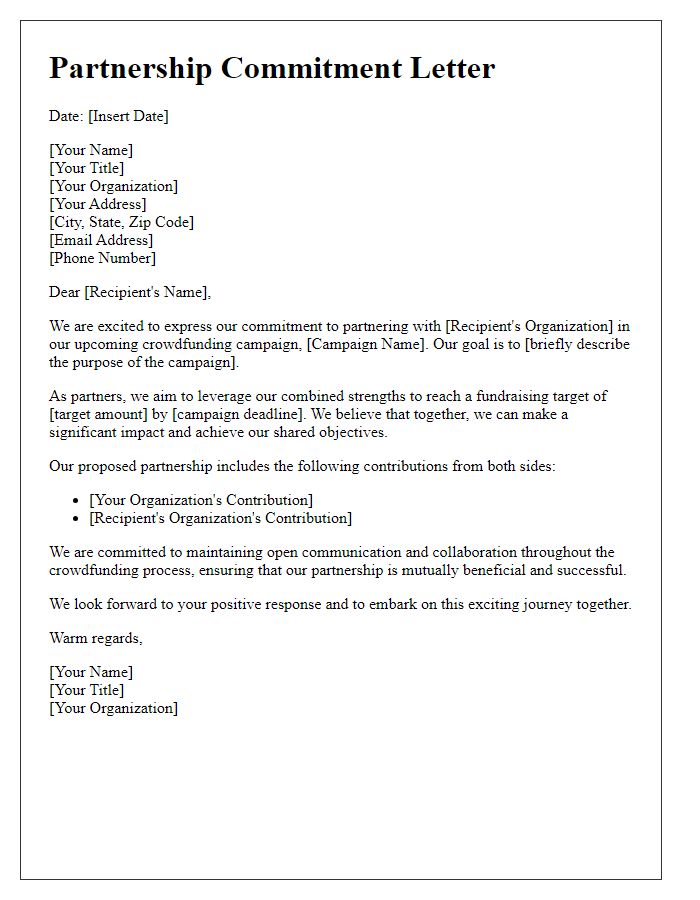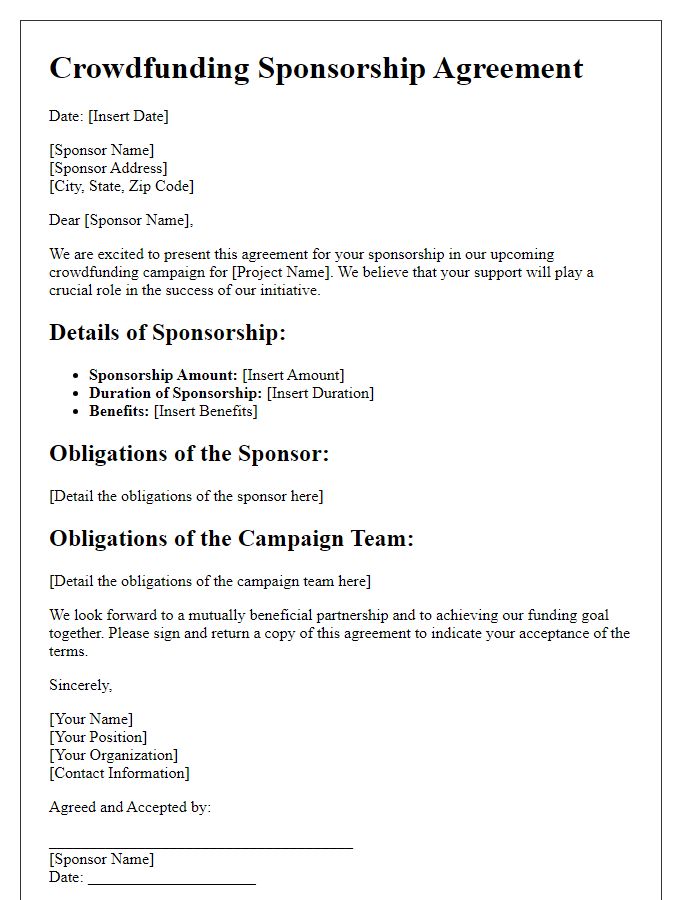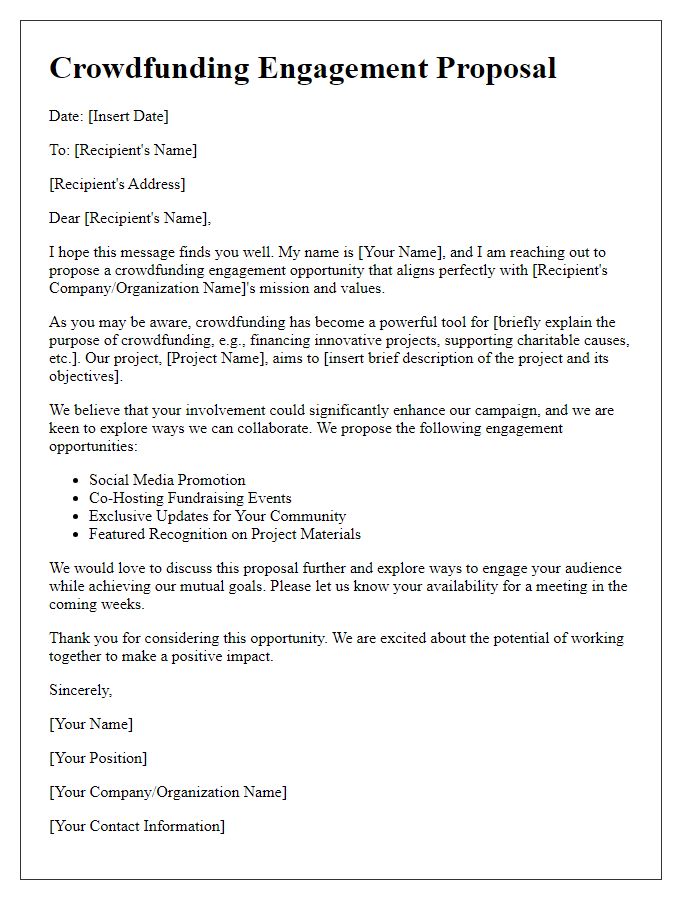Are you looking to kickstart a crowdfunding campaign but unsure how to lay the groundwork? Enter the world of partnership agreements! Crafting a solid letter template for establishing your crowdfunding partnership can be the blueprint you need for success. Join us as we explore this essential tool to help your campaign thrive!

Introduction and Purpose of Partnership
Crowdfunding partnerships are essential for supporting innovative projects and initiatives, often through platforms like Kickstarter or Indiegogo. These partnerships aim to gather financial contributions from a diverse group of individuals, mobilizing community support for entrepreneurial ventures, creative endeavors, or charitable causes. Establishing a crowdfunding partnership fosters collaboration between project creators and backers, enabling the sharing of ideas, resources, and networks. This synergy encourages transparency and trust, vital for a successful funding campaign, ultimately enhancing the likelihood of meeting or exceeding funding goals. Organizations such as the Global Crowdfunding Alliance help ensure best practices are followed throughout this process, promoting accountability and success in various projects.
Roles and Responsibilities of Each Party
A crowd funding partnership agreement outlines specific roles and responsibilities of each party involved in the fundraising initiative. Typically, the project owner (the individual or organization seeking funds) is responsible for creating a compelling campaign, setting financial goals, and delivering rewards to backers, while maintaining clear communication throughout the project. The marketing partner (a company or individual helping promote the campaign) focuses on outreach strategies, social media engagement, and audience targeting, enhancing visibility and driving contributions. Financial partners may oversee budget management and fund disbursement, ensuring compliance with legal and financial obligations. Each party contributes their expertise, making it crucial to establish clearly defined roles to facilitate a successful crowdfunding endeavor.
Financial Contributions and Distributions
Crowdfunding initiatives often involve financial contributions and distributions among partners. A crowdfunding partnership agreement outlines the terms for monetary investments collected from backers and allocated among partners. This agreement typically specifies the amount of financial contributions required from each partner, detailing the percentage share each partner will receive from the funds raised. It also includes distribution timelines, stipulating when partners will receive their returns based on the project's schedule. Clarity in financial obligations and potential profits is essential, as it helps manage expectations and maintain transparency, fostering trust and collaboration among partners. Additional components might encompass treatment of any unforeseen expenses, reallocations of contributions if goals are not met, and procedures for conflict resolution regarding financial matters.
Intellectual Property Rights and Use
The partnership agreement for crowdfunding initiatives emphasizes the significance of Intellectual Property Rights (IPR) in collaborative ventures. Intellectual Property, which includes trademarks, copyrights, and patents, is vital for protecting the unique ideas and assets developed during the project, based on innovations in technology and creative content. Each partner must retain ownership of their pre-existing intellectual properties, while jointly developed ideas during the crowdfunding process require a shared agreement on usage and licensing terms. Specifically, clear mechanisms must be established for the commercialization of developed products or services, particularly in scenarios with revenue sharing. Compliance with relevant legal frameworks, such as the United States Patent and Trademark Office (USPTO) guidelines or international treaties like the Berne Convention for copyright law, is essential to ensure proper enforcement and protection of rights. Additionally, partners may consider including confidentiality agreements to safeguard sensitive information, promoting trust and cooperation throughout the partnership.
Termination and Amendment Procedures
A crowd funding partnership agreement may include specific clauses detailing termination and amendment procedures. Termination methods could involve mutual consent between parties (documented in writing), completion of funding goals (for a term of 12 months), or breach of agreement terms (with a notice period of 30 days). Amendments can be executed through documented consensus, ensuring clarity on changes, such as adjusting funding targets (increasing participation from 25% to 35%) or project timelines (extending the period from 6 months to 1 year). All modifications must be documented and both parties acknowledge receipt, ensuring transparency and accountability throughout the partnership.













Comments